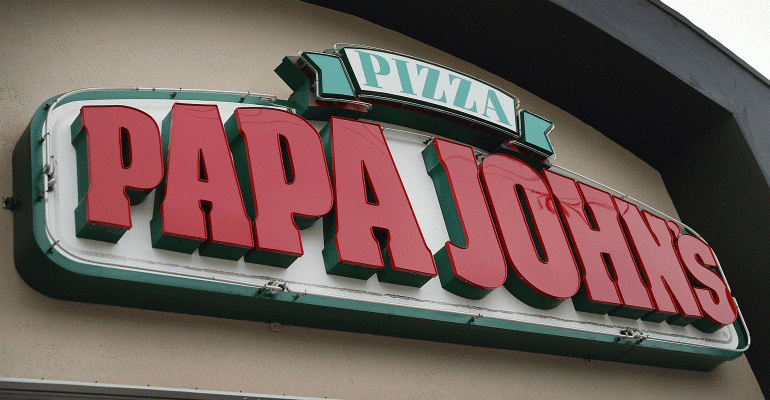Papa Johns’ customers are spending less than they had previously, and when they do spend money on pizza, they are more likely to choose third-party aggregators over the company’s first-party delivery channels. This shift in mix balance was a primary driver behind the Atlanta-based pizza chain’s 2% decline in North America same-store sales, as well as revenue and overall sales deflation for the first quarter ended March 31, 2024.
Sales from aggregator channels have grown to 16% this quarter, as compared with 12% the same quarter of 2023, meanwhile organic delivery has declined year-over-year, while carryout remains flat. This highlights the quandary operators face when utilizing third-party apps: they are crucial to pull in new and non-regular customers, but operators lose revenue from these transactions.
“This shift in channel also led to a slightly lower average ticket, as the relatively profit-neutral revenue from our organic delivery fee decline and strategic pricing actions by our revenue management team helped to somewhat mitigate this delivery fee impact in the current environment,” Papa Johns CFO and interim CEO Ravi Thanawala said during Thursday’s earnings call for the first quarter.
Like many other companies this quarter, Papa Johns is feeling the negative effects of a more cautious consumer environment, where discretionary income is down overall, so customers are being choosier with where they spend their income.
“We're also seeing customers become more deliberate in managing their overall order costs, so while our core offering pizza remained higher year-over-year, sides and beverages were lower,” Thanawala added.
As many of their competitors in the industry ramp up discounting to lure in more budget-conscious guests, Papa Johns is finding that the brand’s everyday value strategy could be hurting the bottom line in the short-term:
“The highly competitive promotional environment has been a headwind to transaction,” Thanawala said. “We believe Papa Johns’ perceived value is about providing high-quality product innovation at the right time and at the right price. It is important that we maintain discipline in our limited time offers, pricing strategies, and product innovations for the long-term success of the business. Although, we won't hesitate to make short term adjustments as we deem appropriate on a market-by-market basis to remain competitive.”
As Papa Johns navigates these operational challenges, the company is still moving full-steam-ahead with its “Back to Better 2.0” strategy launched in January, which is meant to “enhance restaurant level profitability and reinvigorate development over the long term.” This quarter, the company introduced the new “Crispy Cuppy ‘Roni” platform across three menu items, featuring the trending cupped pepperoni. Papa Johns also introduced a refreshed marketing platform meant to “drive brand relevance” with modern images and messaging across advertising channels.
“While it's only been five weeks since we launched our new brand platform, early research of the campaign showed an increase in the consumers purchase intent,” Thanawala said. “Moving ahead, we're focused on improving sales by our revenue management strategies, ongoing loyalty improvements, and adapting our media strategy mix to maximize effectiveness across channels.”
The company also plans to focus on continued portfolio expansion and expects net new units to increase by more than 20% in the year ahead.
For the first quarter ended March 31, Papa Johns reported total revenues of $514 million, down 2% from $527 million the same quarter the year prior. Net income was $14.6 million or $0.44 per share, down from $22.4 million or $0.65 per share the same quarter last year.
Papa Johns reported eight net unit openings in the first quarter, largely driven by North America growth for a grand total of 5,914 stores systemwide.
Contact Joanna at [email protected]m





